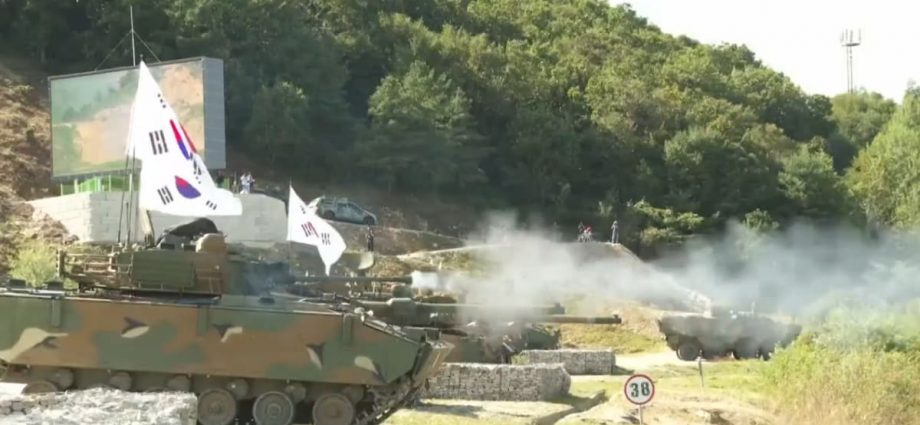
Poland’s choice to buy from South Korea instead of neighbouring European countries shows that it trusts the Asian country more in terms of factors like cost and production schedule, he said.
He said South Korea’s defence industry could replicate the success of its other pillar industries, which typically started with heavy state support.
According to the Export-Import Bank of Korea, arms exports during the 2017 to 2021 period jumped 177 per cent from that of the 2012 to 2016 period. In 2021, it exported arms worth a record US$7 billion.
This year, the Government expects to sell another US$10 billion worth of arms to overseas markets.
LOOKING FURTHER FOR BUSINESS
South Korean companies are eyeing countries beyond Europe.
Mr Oh Kyea-hwan, team leader of the Hanwha Defence Overseas Business Division, told CNA that while the current focus is on the European market due to the big demand caused by the Russian invasion of Ukraine, the country is looking further.
“We are also focusing on Asia. We now just export small, small quantities, products to Indonesia, and also the Philippines. But I believe that the market will be growing fast. Also one of the areas that we are targeting is the Middle East and also West Asia, like India,” he said.
In 2000, South Korea ranked 31st on the list of global arms exporters. By 2021, it shot up to eighth place, according to data from the Stockholm International Peace Research Institute.
President Yoon Suk Yeol recently said he wants the country to aim for the fourth place on the list.
Dr Yang said that South Korea’s varied climate, which includes extreme weather conditions, is an advantage when it comes to its arms business as makers can factor in climatic conditions.
“Since South Korea is a country with a strange climate, it has dealt with various cases and a lot of data is piled up. Now, it all depends on how much South Korea responds to its customer countries,” he said.

